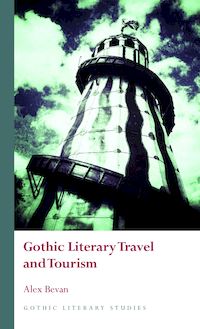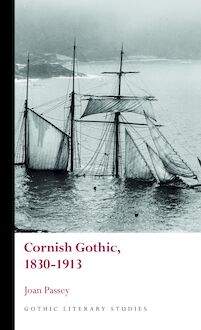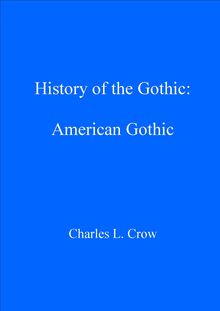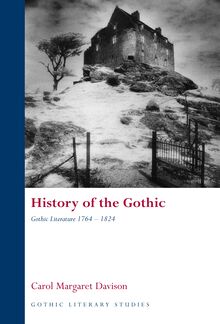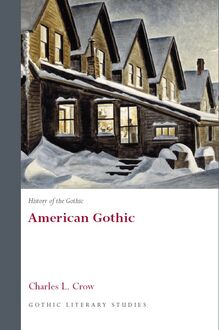-
 Univers
Univers
-
 Ebooks
Ebooks
-
 Livres audio
Livres audio
-
 Presse
Presse
-
 Podcasts
Podcasts
-
 BD
BD
-
 Documents
Documents
-
- Cours
- Révisions
- Ressources pédagogiques
- Sciences de l’éducation
- Manuels scolaires
- Langues
- Travaux de classe
- Annales de BEP
- Etudes supérieures
- Maternelle et primaire
- Fiches de lecture
- Orientation scolaire
- Méthodologie
- Corrigés de devoir
- Annales d’examens et concours
- Annales du bac
- Annales du brevet
- Rapports de stage
La lecture à portée de main
Vous pourrez modifier la taille du texte de cet ouvrage
Découvre YouScribe en t'inscrivant gratuitement
Je m'inscrisDécouvre YouScribe en t'inscrivant gratuitement
Je m'inscrisEn savoir plus
Vous pourrez modifier la taille du texte de cet ouvrage
En savoir plus

Description
This volume carves out a new area of study, the ‘industrial Gothic’, placing the genre in dialogue with the literature of the Industrial Revolution. The book explores a significant subset of transatlantic nineteenth-century literature that employs the tropes, themes and rhetoric of the Gothic to portray the real-life horrors of factory life, framing the Industrial Revolution as a site of Gothic excess and horror. Using archival materials from the nineteenth century, localised incidences of Gothic industrialisation (in specific cities like Lowell and Manchester) are considered alongside transnational connections and comparisons. The author argues that stories about the real horrors of factory life frequently employed the mode of the Gothic, while nineteenth century writing in the genre (stories, novels, poems and stage adaptations) began to use new settings – factories, mills, and industrial cities – as backdrops for the horrors that once populated Gothic castles.
List of Illustrations
Acknowledgements
Introduction: Weaving a Transatlantic Gothic Industrial History
Chapter 1: The Industrial Gothic Novel
Chapter 2: Industrializing the Gothic Victim/Heroine: Mill Girls and Factory Girls
Chapter 3: The Carceral Gothic and the Cotton Industrial Complex
Chapter 4: Old and New Industrial Horrors: Monsters and Disabled Bodies
Chapter 5: The Industrial Environment: EcoGothic Horrors
Epilogue: Unravelling the Industrial Gothic
Sujets
Informations
| Publié par | University of Wales Press |
| Date de parution | 15 juin 2021 |
| Nombre de lectures | 0 |
| EAN13 | 9781786837721 |
| Langue | English |
| Poids de l'ouvrage | 1 Mo |
Informations légales : prix de location à la page 0,4400€. Cette information est donnée uniquement à titre indicatif conformément à la législation en vigueur.
Extrait
INDUSTRIAL GOTHIC
SERIES PREFACE
Gothic Literary Studies is dedicated to publishing groundbreaking scholarship on Gothic in literature and film. The Gothic, which has been subjected to a variety of critical and theoretical approaches, is a form which plays an important role in our understanding of literary, intellectual and cultural histories. The series seeks to promote challenging and innovative approaches to Gothic which question any aspect of the Gothic tradition or perceived critical orthodoxy. Volumes in the series explore how issues such as gender, religion, nation and sexuality have shaped our view of the Gothic tradition. Both academically rigorous and informed by the latest developments in critical theory, the series provides an important focus for scholarly developments in Gothic studies, literary studies, cultural studies and critical theory. The series will be of interest to students of all levels and to scholars and teachers of the Gothic and literary and cultural histories.
SERIES EDITORS
Andrew Smith, University of Sheffield
Benjamin F. Fisher, University of Mississippi
EDITORIAL BOARD
Kent Ljungquist, Worcester Polytechnic Institute Massachusetts
Richard Fusco, St Joseph s University, Philadelphia
David Punter, University of Bristol
Chris Baldick, University of London
Angela Wright, University of Sheffield
Jerrold E. Hogle, University of Arizona
Industrial Gothic
Workers, Exploitation and Urbanization in Transatlantic Nineteenth-Century Literature
Bridget M. Marshall
Bridget M. Marshall, 2021
All rights reserved. No part of this book may be reproduced in any material form (including photocopying or storing it in any medium by electronic means and whether or not transiently or incidentally to some other use of this publication) without the written permission of the copyright owner except in accordance with the provisions of the Copyright, Designs and Patents Act. Applications for the copyright owner s written permission to reproduce any part of this publication should be addressed to the University of Wales Press, University Registry, King Edward VII Avenue, Cardiff CF10 3NS.
www.uwp.co.uk
British Library Cataloguing-in-Publication Data
A catalogue record for this book is available from the British Library.
ISBN 978-1-78683-770-7
eISBN 978-1-78683-771-4
The right of Bridget M. Marshall to be identified as author of this work has been asserted in accordance with sections 77 and 79 of the Copyright, Designs and Patents Act 1988.
The publisher has no responsibility for the persistence or accuracy of URLs for any external or third-party internet websites referred to in this book, and does not guarantee that any content on such websites is, or will remain, accurate or appropriate.
Cover image: Illustration for the broadside ballad The Albion Mills on Fire (1791), showing a devil encouraging the flames with bellows. Courtesy British Library.
C ONTENTS
List of Illustrations
Acknowledgements
Introduction: Weaving a Transatlantic Gothic Industrial History
1 The Industrial Gothic Novel
2 Industrializing the Gothic Victim/Heroine: Mill Girls and Factory Girls
3 The Carceral Gothic and the Cotton Industrial Complex
4 Old and New Industrial Horrors: Monsters and Disabled Bodies
5 The Industrial Environment: EcoGothic Horrors
Epilogue: Unravelling the Industrial Gothic
Notes
Bibliography
L IST OF I LLUSTRATIONS
Figure 1: Image from broadside The Albion Mills on Fire (London, 1791). Courtesy British Library.
Figure 2: A Minister Extraordinary Taking Passage Bound on a Foreign Mission to the Court of His Satanic Majesty! by Henry R. Robinson (1833). Courtesy Library of Congress Prints and Photographs Division, LC-USZ62-1567.
Figure 3: A Very Bad Man by Henry Robinson (1833). Courtesy Library of Congress Prints and Photographs Division, LC-USZ62-50464.
Figure 4: Illustration by Auguste Hervieu, There s a dead body walking about the room! One? No! It is not one; it is five hundred , from Michael Armstrong (London: H. Colburn, 1840).
Figure 5: Excerpt from anonymous broadside, Lines in Commemoration of Sarah M. Cornell (Philadelphia, 1832). Courtesy Library of Congress, Rare Book and Special Collections Division, Printed Ephemera Collection.
Figure 6: Excerpt from broadside by George Gordon Byron DeWolfe, The Man with the Waterproof Cape (28 October 1870). Courtesy American Antiquarian Society.
Figure 7: Photograph of Middlesex Company Mill No. 1, from Frank P. Hill s Lowell Illustrated: A Chronological Record of Events and Historical Sketches of the Large Manufacturing Corporations (Lowell: 1884). Courtesy Lowell Historical Society.
Figure 8: Excerpt from The House that Bigelow Built , Vanity Fair (28 January 1860), 78.
Figure 9: Illustration from A Shroud as well as a shirt , Punch (19 August 1848), 76.
A CKNOWLEDGEMENTS
Archival work - studying letters, diaries, and other documents that have been sequestered away in folders, boxes and the bowels of various institutions - has been one of the great joys of this project; I owe countless thanks to the workers who documented their experiences and memories, and to the family members, archivists, librarians and historians who have preserved, catalogued and further documented their lives. To these workers, in Manchester, England; Glasgow, Scotland; Lowell, Massachusetts and all over the nineteenth-century industrializing world, I dedicate this work.
I have benefited from the expertise of numerous archivists and librarians who have helped me in person and virtually with resources at the following institutions: the American Antiquarian Society, Boston Public Library, the Center for Lowell History, the Kheel Center for Labor-Management Documentation Archives of the Catherwood Library at Cornell University, Lancashire County Council Library, Lowell Historical Society, Lowell National Historical Park, Milne Special Collections at the University of New Hampshire Library, the Arthur and Elizabeth Schlesinger Library on the History of Women in America and the Saco Museum. I am particularly grateful to the team at the Tsongas Industrial History Center, especially Sheila Kirschbaum and Ellen Anstey, who have always encouraged me and provided opportunities to share my work with the wider world.
I have been assisted in this project by three wonderful undergraduate research assistants at the University of Massachusetts, Lowell: Daniel Bazarian, Hannah Manning and Julia Ohrenberger. I am grateful to them, and to the University of Massachusetts, Lowell, for supporting them financially as they put in time on this project. I m deeply indebted to the fantastic library staff at the University of Massachusetts, Lowell, including Deborah Friedman, Martha Mayo, Rose Paton, Tony Sampas and Janine Whitcomb. Research librarian Judith Ranta (author of the indispensable Women and Children of the Mills: An Annotated Guide to Nineteenth-Century American Textile Factory Literature ), Marcie Suzanne Farwell of the Kheel Center, Karen Parsons of the Loomis Chaffee School, Emeline Reynolds of the University of New Hampshire Library, Wayne Hammond of the Chapin Library, Williams College, Michael Lally at the Lowell Cemetery and Laurel Gabel, independent gravestone researcher, have all assisted me in tracking down curious leads, and I am grateful for their time and generosity. Thanks, too, to the members and especially conveners of the Shoddy Court Literary Mutual Improvement Society, a source of joy and engagement during the 2020 pandemic lockdown.
The International Gothic Association s conferences have been incredibly helpful to me; I am grateful to all the organization s leaders, past and present, who have organized these events over the years, and especially to all the IGA members who engaged with my work at these conferences. Professor Carol Margaret Davison provided invaluable feedback at key stages of this project s development and has been a rigorous and generous reader. Sarah Lewis at the University of Wales Press swooped in at just the right time to get me back on track with this project, and I am grateful to her and the entire staff of the Press for their support of this book.
Portions of this book are derived from an article and a book chapter that I have previously published, including the following:
There is a secret down here, in this nightmare fog : Urban-Industrial Gothic in Nineteenth-Century American Periodicals , Women s Studies , 46/8 (2017): 767-84. I am grateful to Alfred Bendixen, who edited the issue and helped me strengthen the article.
Fright Factories: Nineteenth-Century Industrial Gothic , in Agnieszka owczanin and Katarzyna Ma ecka (eds), Gothic Peregrinations: The Unexplored and Re-explored Territories (New York: Routledge, 2018), pp. 163-79. I am grateful to Agnieszka owczanin and Katarzyna Ma ecka for their editorial guidance, which improved both that chapter and this book.
I am deeply indebted to my colleagues and students in the English Department at the University of Massachusetts, Lowell, who have provided me with a wonderful community of engaging and thoughtful scholars for over fifteen years. I owe many thanks to our incomparable department staff member, Jacqueline Ledoux. I am also thankful for the support of Dean Luis Falc n and the magnificent staff of the College of Fine Arts, Humanities, and Social Sciences, particularly Alice DaSilva and Robyn Lessard.
I would not have survived many phases of this project without the kindness and good humour of my dear friends Paula Haines, Sue Kim and Julie Nash. Likewise, Mary Kenny, Matthew Morabito, Wendy MacLean, Gabriela Schneider, Elizabeth Mazsa and Ian Mazsa have made the writing process all the more pleasant by cheering me on.
To my family, including all of the Marshalls and the Bridges, thank you for putting up with my downright disturbing stories as we walked the streets of industrial towns. Most importantly, I owe a debt of gratitud
-
 Univers
Univers
-
 Ebooks
Ebooks
-
 Livres audio
Livres audio
-
 Presse
Presse
-
 Podcasts
Podcasts
-
 BD
BD
-
 Documents
Documents
-
Jeunesse
-
Littérature
-
Ressources professionnelles
-
Santé et bien-être
-
Savoirs
-
Education
-
Loisirs et hobbies
-
Art, musique et cinéma
-
Actualité et débat de société
-
Jeunesse
-
Littérature
-
Ressources professionnelles
-
Santé et bien-être
-
Savoirs
-
Education
-
Loisirs et hobbies
-
Art, musique et cinéma
-
Actualité et débat de société
-
Actualités
-
Lifestyle
-
Presse jeunesse
-
Presse professionnelle
-
Pratique
-
Presse sportive
-
Presse internationale
-
Culture & Médias
-
Action et Aventures
-
Science-fiction et Fantasy
-
Société
-
Jeunesse
-
Littérature
-
Ressources professionnelles
-
Santé et bien-être
-
Savoirs
-
Education
-
Loisirs et hobbies
-
Art, musique et cinéma
-
Actualité et débat de société
- Cours
- Révisions
- Ressources pédagogiques
- Sciences de l’éducation
- Manuels scolaires
- Langues
- Travaux de classe
- Annales de BEP
- Etudes supérieures
- Maternelle et primaire
- Fiches de lecture
- Orientation scolaire
- Méthodologie
- Corrigés de devoir
- Annales d’examens et concours
- Annales du bac
- Annales du brevet
- Rapports de stage


